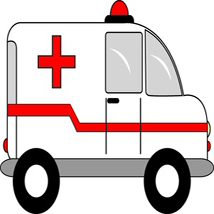My life in ATC began with 4 years Air Force then another 30 years with the Federal Aviation Admin. working tower & radar at some big international airports. I fought in the 1981 war with PATCO, survived the strike and kept a job that was just too exhilarating to walk away from. While there was nothing better than working airplanes, I did move on through several air traffic supervisory and management positions. It was a long, crazy career but I wouldn't trade a moment of it for love or lucre!
Hello Austin! Your question brings us to an important but relatively rare aspect of air traffic control. Here’s the short answer. There is generally no difference between the way passengers and cargo flights are handled. If two B-747s are headed from Dallas to Dulles; it won’t matter that one was full of people and the other full of boxes. Guided by egalitarian principles, controllers apply the same priority to both. It’s referred to in the business as “first come, first served.” Just like the ticket line at a movie theater; nobody cuts in. There are, however, exceptions.
One important exception would be an aircraft using the word “Lifeguard” in their radio callsign. Whenever an air carrier or air taxi flight uses the “Lifeguard” term in their callsign, it tells ATC they are transporting important and highly perishable cargo such as vital organs, blood, urgently needed medical material or patients. For obvious reasons, these guys get priority handling. That means ATC will get them airborne as quickly as possible, try to give them “shortcuts” to their destination and steer them around rough weather along the way. We’ll even phone ahead if needed to make sure they get expeditious ground handling when they land. This is how the surgeon quickly gets a much needed kidney from Illinois to a transplant patient in New York. It’s a thing of beauty.
I hope this answers your question!
Cheers,
Factor
I appreciate your interest in the profession Aaron. Although I've spotted a lot of crazy things and witnessed a few serious mishaps; I've never personally had to tell a pilot to abort the landing because of an observed problem with the aircraft. I have, however, been in the tower when other controllers had to.
During my Air Force career, a teammate waved off an F-4 Phantom pilot who was about to land without his plane's wheels down. The pilot later sent a case of beer to the tower, which we quickly consumed after work!
While working overseas, another tower controller tries to warn a pilot of the same problem. Unfortunately, the pilot wasn't paying attention and landed, gear up. There were a lot of sparks but luckily - no fire.
One night in the tower, I watched a TWA B-707 takeoff. It looked a little odd to me because it seemed the runway lights were all behind the plane as it passed, left to right, in front of us. Sure enough; the guy had taken off from the parallel taxiway. Realizing what he'd done, the pilot quipped something about how blue the runway lights looked. Not another word was spoken.
I saw an Eastern Airliones B-727 make an intentional gear-up landing due to mechanical problems. It was textbook perfect. The plane slid to a stop and was immediately surrounded by emergency vehicles. Everyone in the tower cab clapped.
Then there was the foreign air carrier pilot who advised, as he approached the airport, that he was going to test the plane's new 'autoland' system. Cool! We cleared him to land. It was one of the craziest landings I ever saw. The plane bounced, swerved and actually rolled off the runway edge then back on again before eventually finding a taxiway to turn onto. Suspecting the pilot may have a bit, err, "impaired" - we called the airline's operations office on the airport. After explaining what the pilot told us, the company representative said that particular aircraft was not fitted with an autoland system. I sometimes wonder whatever happened to that pilot.
No matter how well trained we are or how far the technology advances; aviation remains far from being an exact science. It's crazy but maybe that's why I love it.
Thanks again for writing!
Greetings Scannerfan! I believe I’ve heard of NYC. It’s somewhere near New Jersey, right? But seriously; I don’t know very much about scanner technology so I’m not sure I can answer your question. I can tell you that ATC radio frequencies are not encrypted.
As a scanner fan, I’m sure you’ve checked your receiver and antenna for malfunctions. Among the questions I’d ask you, if I could, would be; Are you able to receive any other transmissions? Do you know anyone else who listens to New York ATC? If so; are they receiving any transmissions? Have any new buildings gone up that might be blocking your reception?
Although it doesn’t happen very often, ATC frequencies occasionally change. Have you verified you still have the current frequencies selected in your scanner? I believe there are websites that provide ATC frequency information. You could also check the most current aeronautical charts for the New York area to see if the frequencies you’ve selected are correct.
As a secondary source; I know there are several websites where you can monitor ATC frequencies.
Thanks for writing and I hope this helps you!
Cheers,
Factor
Thanks for writing, Matthew. I am glad to hear you are working on your instrument rating. It’s a great way to build confidence in your airmanship! Once you receive your rating you’ll have more options when it comes to traveling between points A and B. Just take it slow for a while after your check-ride. Getting an instrument rating doesn’t necessarily mean you’re ready for long flights in actual IFR conditions; especially if you are flying solo! As you may have already noticed, cockpit workload is much higher on an IFR flight plan. If possible, take a qualified friend along as an extra set of eyes, ears and hands.
To your question, it is definitely possible to practice Departure Procedures (SIDs) and Standard Terminal Arrivals (STARs) in conjunction with your flight plan. When published for a particular airport; SIDs and STARs are usually the ‘default’ setting with ATC. If you don’t include them in your flight plan, they may be assigned anyway. They can be difficult to avoid unless you add “SSNO” (pilot cannot accept SIDs or STARs) to your remarks section.
Assuming such procedures are published and available for your departure and arrival airports and you want to fly them, you should include them in your flight plan (FP). You might even add a remark to the FP regarding instrument training. That will indicate to ATC that you need to practice the procedures you filed. Many controllers besides myself held Instrument ratings and I’m sure many still do. It helps them better understand “the big picture.” Your remark should resonate as they’ve experienced the critical training you’re now going through.
If, when you receive your IFR clearance, it does not include the SID you filed for; advise the controller you’d like to fly that procedure if possible. Same with the STAR arrival. When enroute, if ATC offers a shortcut or takes you off your planned route for another reason, let them know you’d like to fly the full arrival procedure if possible. I’ll put a qualifier on that though . . .
One of the most important skills any pilot who deals regularly with ATC can learn is the ability to estimate your controller’s workload. If you hear a lot of other planes on the frequency, the controller sounds a bit harried or is handling a specific issue at the time – it might not be a good idea to make special requests. It’s a judgment call, I know. Just try not to limit your listening to the transmissions directed at you. There is much to learn by being aware of what is going on around you.
Finally, listen to your instructor! If he or she disagrees with anything I’ve said here – go with your instructor’s guidance! They hold all the cards until you’ve completed your check ride.
Thanks for writing!
Factor
EMT
 What was the most gruesome trauma you witnessed while on the job?
What was the most gruesome trauma you witnessed while on the job?
Sushi Chef
 How do sushi chefs tell when a fish has gone bad? Is it just the smell?
How do sushi chefs tell when a fish has gone bad? Is it just the smell?
Football Official
 Do you think it's ok for NFL refs to play fantasy football?
Do you think it's ok for NFL refs to play fantasy football?
Controllers in airport towers are mainly responsible for takeoffs and landings. There may occasionally be some low altitude traffic (helicopters and small planes) that need to cross over the airport at very low altitudes. They will call the tower for permission to fly through their traffic pattern. These flights won’t be landing but tower controllers must keep them safely separated from traffic operating in and out of the airport.
Tower controllers do not handle aircraft operating at cruising altitudes. Those flights are controlled by facilities known as “Air Route Traffic Control Centers” or simply “centers.” Working in large buildings that may not be anywhere near an airport, center controllers provide radar service over huge portions of airspace. For example; Cleveland Center controls an area that extends from central Pennsylvania, West to central Michigan!
Thanks for your interest!
Factor
Hi Yoanda. Thanks for the nice compliment on my blog! I should also congratulate you for being the first person ever to ask that question. The phrase “No longer a factor” actually means a couple of things to me. I’ll begin with the more esoteric meaning; familiar mainly to controllers and pilots.
Let me set this up. Pilots can have a hard time seeing other airplanes, even under the best weather conditions. No surprise, given the speeds that modern airplanes operate at. Pilots might not see converging traffic until the two flights are very close together, and that may be too late. Think about two planes, each traveling at, say, 300 knots and moving toward each other. Their actual rate of closure is more like 600 knots. Assuming the pilots saw each other at some point, there would be very little time to react if they needed to avoid a collision. This is where a controller working a radar sector can help.
As you might guess, radar can spot airplanes long before a pilot can. ATC could be working both planes or just one of them but either way; if it looks like the two might pass in close proximity to each other, the controller will issue what we call a traffic advisory. That way, the pilot or pilots won’t be surprised when they see the other aircraft. In the congested airspace around busy airports, traffic advisories can be very important in helping pilots be aware of what’s going on around them.
Traffic advisories are always issued in reference to a twelve-hour clock. The aircraft’s nose is always at the twelve o’clock position. For example; if the controller saw a radar target on a converging course with your flight, eight miles ahead and to your left, he or she might advise you; “Traffic, ten o’clock, eight miles.” By cranking your head around from the 12 to the 10 o’clock position, there is a pretty good chance you’ll see the other airplane. If that traffic is under ATC control, the controller may add that the other flight is not at your altitude so you won’t worry so much. Once the other plane has passed the potential point of conflict; the controller will tell you; “Traffic no longer a factor!” In 500 words or less, that’s the ATC insider’s meaning of the phrase.
Using the phrase as my screen name is just my way of saying that, as both a controller and a pilot, I once was a “factor” in the aviation industry. As I am now blissfully retired from ATC, have not flown in years and my blog provides only tangential contact with the industry; I am officially “no longer a factor!”
But you can call me “Factor.” Thanks for writing!
Well Ruben, You’ve asked a very insightful question! The key word is “medications.” There are very few medications that controllers can take and still be allowed to do their job. The kinds of drugs that enhance concentration are strictly prohibited. There may be some non-prescription botanicals (herbal medicines) that would help but they’re really not necessary. The most effective concentration/focus enhancer a controller can use is more traffic! The busier we get, the more concentration is required and the more focused we become.
In the Seventies, when I was a newly minted journeyman controller, I had an interesting discussion with my neighbor one day, during a pause in our lawn mowing. I told him about my recent certification and what it felt like to work a busy radar sector without an instructor backing me as a safety net. Having all those planes and passengers depending on me alone was both terrifying and exhilarating. I’ll tell you though; I was never more focused in my life.
My neighbor, a Cardiologist, smiled and spoke of a similar feeling when, during his first open-heart surgery, he touched a live human heart. When you absolutely have to depend on your own knowledge, skills and judgment to get a job done; there is no need for medication. You concentrate, you focus and you may even experience an adrenaline rush.
Through most of my career, the only consumable stimulants used in our workplace were great quantities of caffeine and nicotine. Oh yeah! Back then, people smoked in the tower till you could hardly see out the widows.
Thanks for asking!
Factor
-OR-
 Login with Facebook
Login with Facebook (max 20 characters - letters, numbers, and underscores only. Note that your username is private, and you have the option to choose an alias when asking questions or hosting a Q&A.)
(A valid e-mail address is required. Your e-mail will not be shared with anyone.)
(min 5 characters)
By checking this box, you acknowledge that you have read and agree to Jobstr.com’s Terms and Privacy Policy.
-OR-
 Register with Facebook
Register with Facebook(Don't worry: you'll be able to choose an alias when asking questions or hosting a Q&A.)